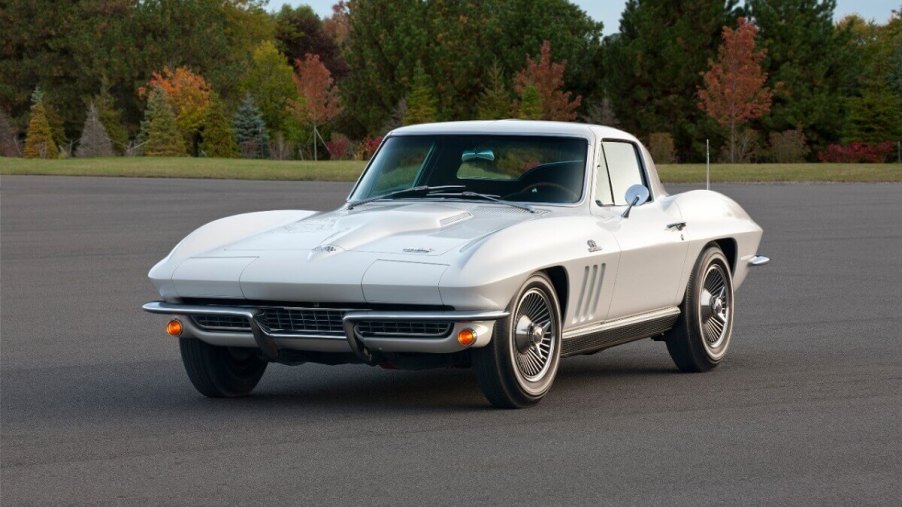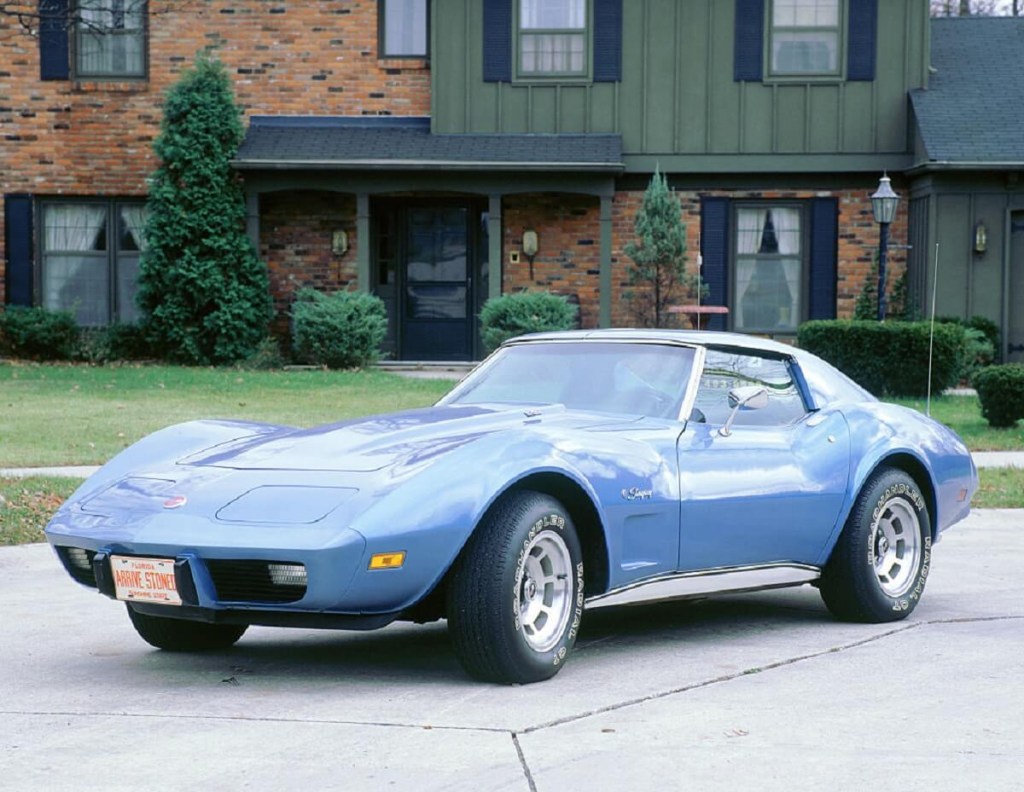
When Was the First Corvette Produced?
When it comes to American sports cars, there’s nothing more iconic than the Chevrolet Corvette. Each generation of the vehicle brings something fresh and interesting to the table. Even the newest, razor-sharp C8 Stingray pulled from previous generations while delivering on a promise to make it a mid-engine vehicle. With this, the Corvette has reentered the limelight. Diehard fans, however, may not give up their original Corvettes just yet.
The C1
The Chevrolet Corvette got its start in 1953, with the first-generation, or C1 model. According to the Corvette Museum reports that “the first 300 [Corvettes]were built by hand in Flint, Michigan.” Production later moved to Bowling Green, Kentucky where the Corvette continues to roll off the line. “The Corvette was mostly a thrown-together experiment,” per Corvette Story. However, after decades of development, the vehicle turned out to be one of the most lucrative experiments in American automotive history.
Specifically, the Chevrolet Brand Manager Thomas Keating wanted to directly address a slump in Chevrolet sales. The experiment began under the code name “Opel,” based on a British sports car. The C1 had 150 hp and a two-speed automatic transmission. Understandably, it quickly became clear that consumers weren’t impressed with the anemic sports car. Out of the original 300, only 183 Corvettes sold.
In 1954, production moved to St. Louis, Missouri, although Chevy didn’t push out as many cars as it could have. However, things really began to take off in 1956. Chevy made some adjustments, giving the Corvette the ability to produce 210 hp as opposed to 150, and consumers took notice.
More changes came in 1958 when Chevy gave the ‘Vette a new body shape. By 1960, the ‘Vette could put out an impressive 315 hp — quite a jump for a seven-year span. In 1962, the C1 ended production.
The C2
In 1963, on the 10-year anniversary of the Corvette, Chevy released the second generation. “It is the most radically redesigned Corvette since the inception of that model name,” explained Car and Driver. “And many of the changes were derived from a number of experimental Chevrolets, some of which were raced extensively.”
This second generation involved the new and exhilarating look of the Corvette Stingray, which boasted “graceful body panels and compound-curved side windows that emphasize the miles-ahead aerodynamic design,” according to the Corvette Museum. Further, in 1965, the performance car icon received an upgrade with a big block V8 engine.
The C3

Rather than wait 10 more years in order to release the C3, Chevy launched it in 1968. The company revealed a sharper-looking, sharkish car. The body was completely redesigned with removable T-tops and the model’s iconic pop-up headlights.
In 1969, Chevy released the ZR-1 optional factory-installed racing package plus a gold Corvette that was a first. The 500,000th model was produced in 1977, and Chevy chose to paint it white with a red interior. Then, in 1978, the nameplate celebrated its 25th year of production.
The C4 was released in 1984, but the first three models of the Corvette truly paved the way for the next five generations, becoming a legacy that we still appreciate today.
Keep up with MotorBiscuit for the latest Chevrolet Corvette content!
Editor’s note: Savannah Keaton contributed to this article.



